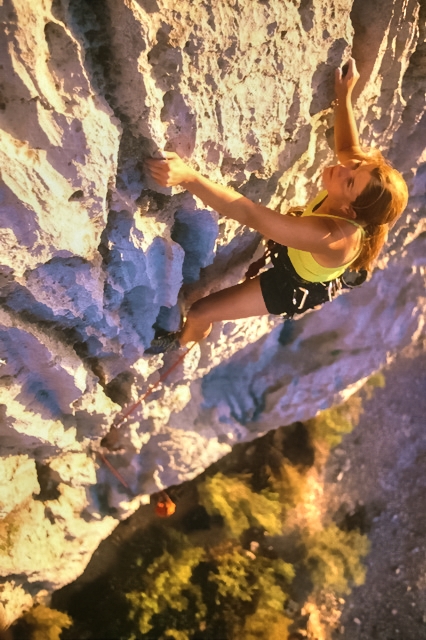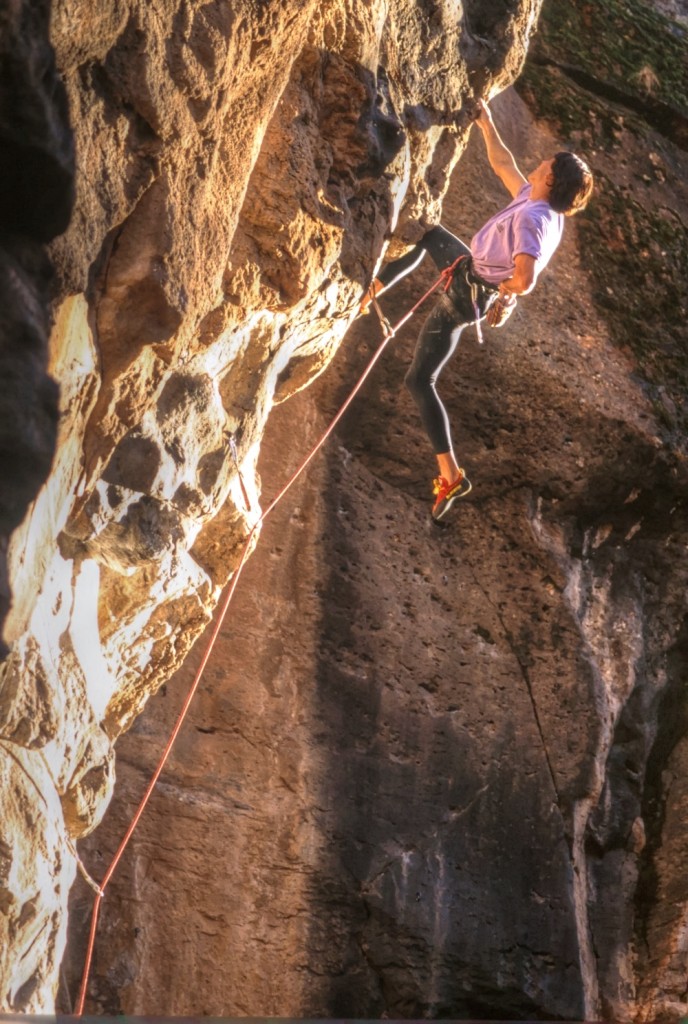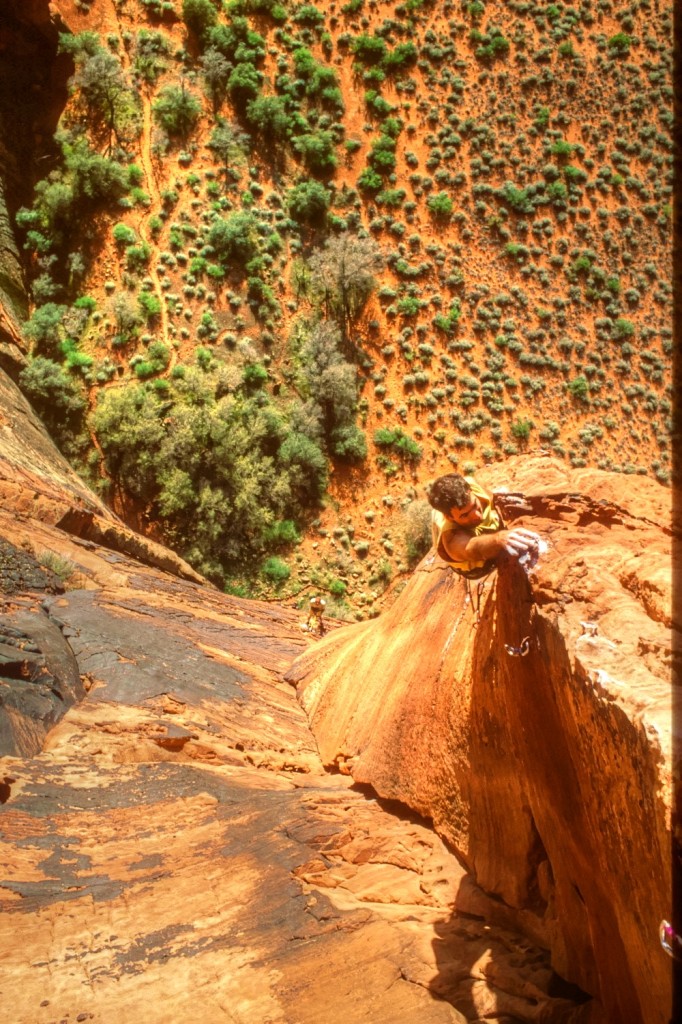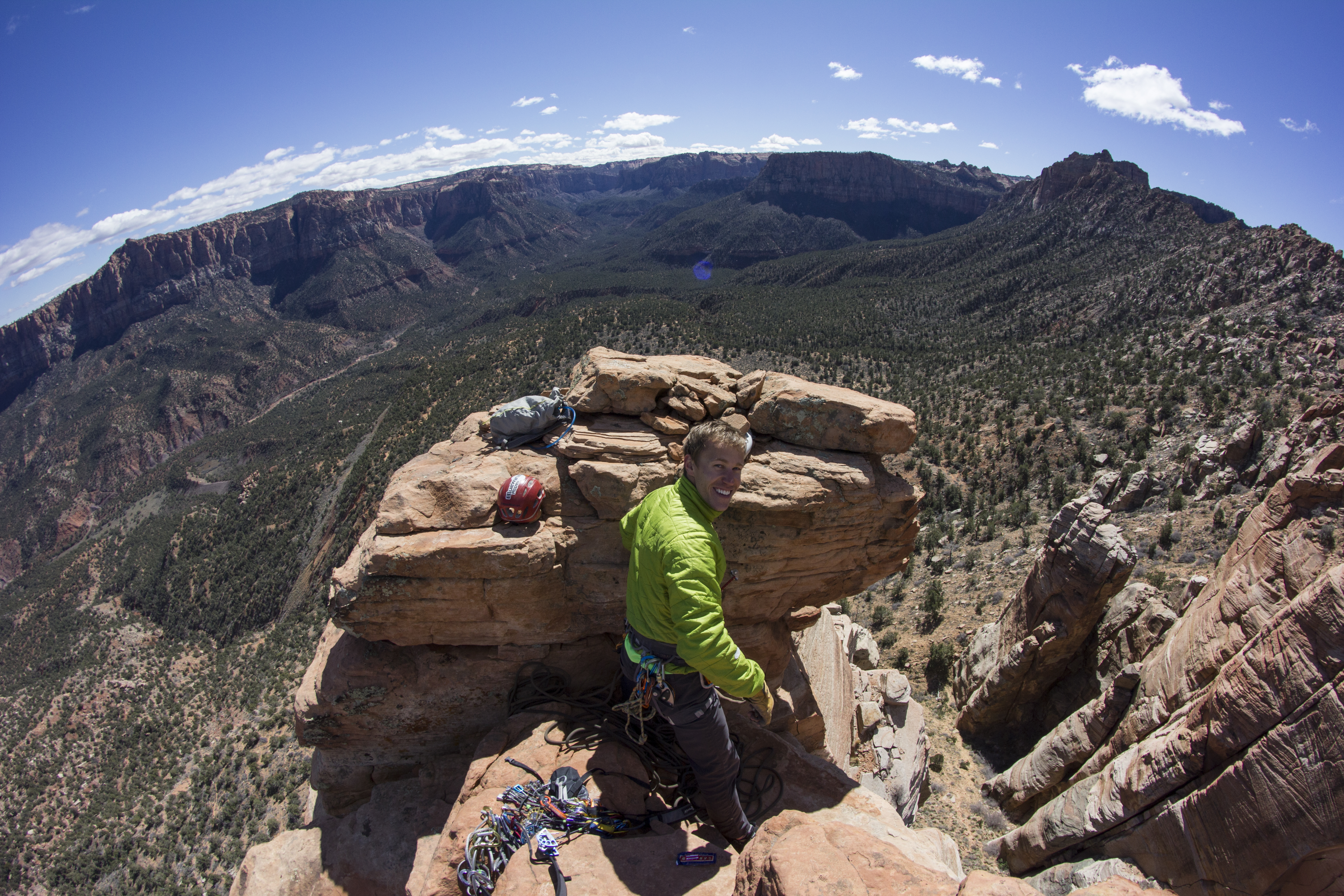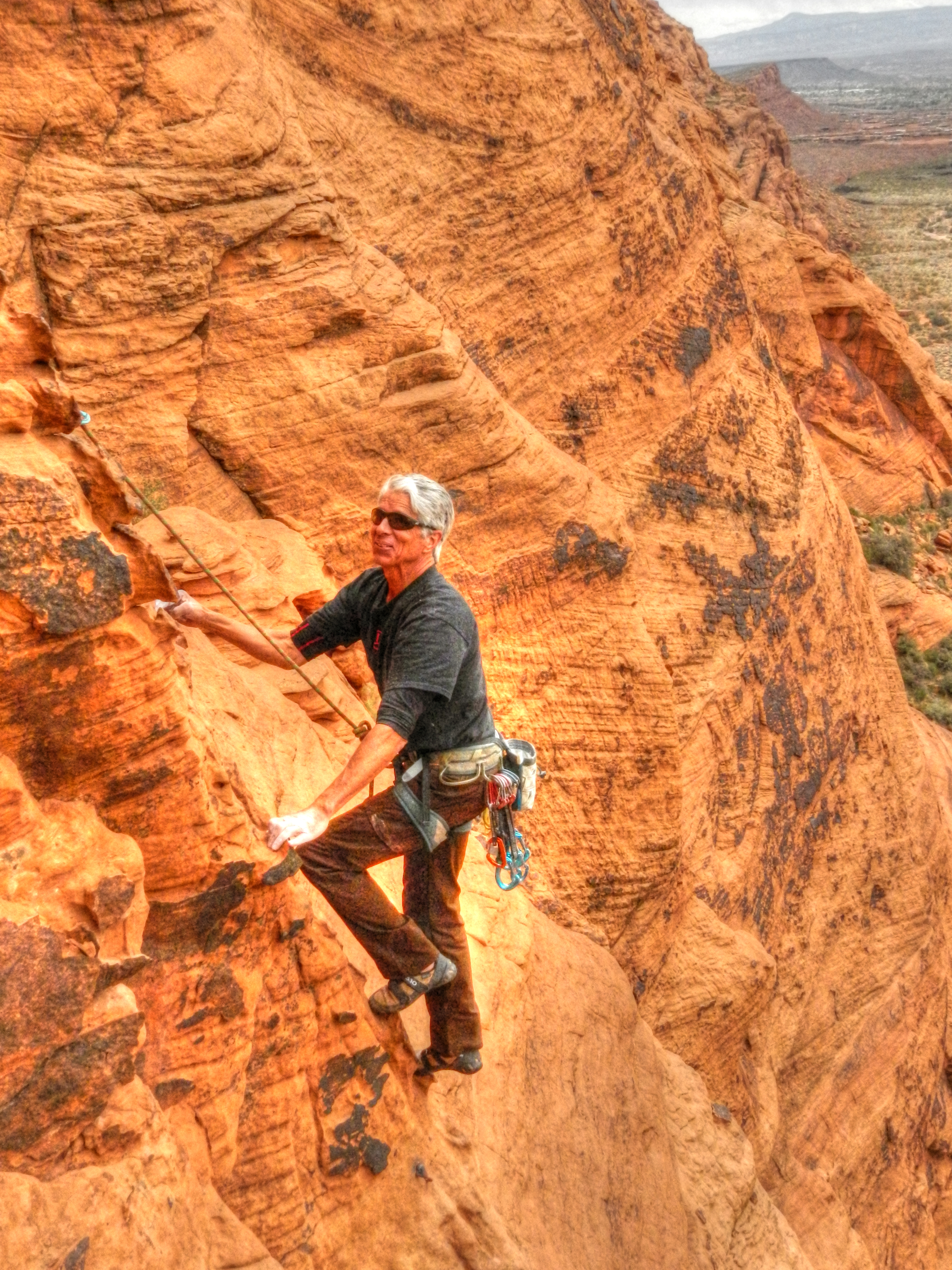
Road trips are an essential means of broadening our climbing experiences.
Travel in and of itself stretches boundaries and expands horizons. Within the context of climbing, travel heightens our sense of the experience and creates a broader, richer tapestry of awareness. Wonderful experiences make us examine our everyday lives through a unique frame of reference and challenge us to make them better. Dismal experiences result in a deep sense of appreciation and gratitude for what we already have. Travel may make you improve as a climber, but more importantly, it allows you to grow as a human.
Some climbing destinations are considered hallowed ground, and literal throngs make an annual haj to the well-known Mecca’s of the sport. But “throngs” are often what we are traveling to get away from, and lines of grimy climbers queuing up for their “burn” are disheartening at best, and a risk to public health at worst. “Burn” is what they actually should do with their clothes.
Other places are more off the beaten path; and offer experiences that compel locals to guard the information as if it were vital to national security. Furtive glances, hushed comments, and disguised approaches are the indicators that bode of unspeakable routes, and breathtaking locations. St. George Utah sits in the middle of several such areas.
Though in the midst of a bleak and barren social desert, the lush vertical landscapes that surround the largest town of southwest Utah offer verdant and diverse climbing experiences. A 100-mile circle drawn around St. George would encompass 3 of the 5 desert regions in North America, 4 wilderness areas, 3 national monuments, a national forest, several state parks, and two of the countries most popular national parks. Perhaps more importantly to the traveling climber, it also contains over 50 climbing areas on 7 different types of stone at elevations from 2000 feet to 11,000 feet above sea level. This vast selection of climbing areas contains every life zone from lower sonoran, to alpine, and represents every style of climbing from big wall to bouldering. The diversity of routes, environments, climbing styles, and terrain within such a limited area is simply unmatched anywhere else.
Utah is a stunning place, and St. George is an excellent base of operations from which to explore its awesome beauty. Numerous hotels from budget to bourgeois line the main drags, all with the promise of clean sheets and some with free breakfast. For the ultimate in luxury accommodations The Green Valley Spa caters to comfort verging on decadence. Here professional massage therapists can remove a climbing days accumulation of knots, and the beds turn a simple nights sleep into a glimpse of nirvana. For the more budget minded – used to 4 course meals of ramen noodles and condiment packets – Utah is almost 75% public land and camping is tolerated on most of the parts not occupied by a cow. Restaurants and grocery stores abound in town, and contrary to popular belief it is now possible to get a cup of coffee without a course of religious instruction or a stern talking to. However, this is a state where the size of many families exceed that of some European countries, so activities for the kids are far more common than say… good book stores. Movies, swimming pools, arcades, and a skate park are just a few of the non climbing activities to amuse and beguile little ones, while adult entertainment’s are kept over the boarder in Nevada.
Thirty minutes west of town, marching along the flanks of the Beaver Dam Mountains, Joshua trees stretch their twisted arms toward the horizon. Limestone crags line the road, guard the passes, and generally dominate the scene. Compact and gray, this Mississippian era stone offers features as otherworldly as the landscape, and seemingly begs for the grip of a chalk-covered hand. Smooth and tan in the overhangs, the transition to sharp gray is usually gradual yet disconcerting, eventually making the thought of a slab fall unthinkably grisly. Routes here require a deft combination of subtlety, expertise and cunning. Climbing becomes transformed into an athletic ballet, with movements choreographed by the stone itself.
Several areas west of town have been developed, some – like the Virgin River Gorge- have gained national recognition, while others remain discreet and offer their own flavor and variation on the limestone theme. The common motif of beautiful stone and harsh landscape changes hourly with the sun, until at days end the orange light of sunset lends a friendly façade to the otherwise stark surroundings. Bathed in such light, the harshness itself becomes the façade and the desert reveals its true character.
Areas where desolate beauty and harshness are a matter of perspective seem to be highly vulnerable to a growing class of climbers who seem to care less each year. Along with a sense of stewardship that creates a responsible climbing community, comes a sense of violation when climbing areas are abused by thoughtless climbers pursuing their own road trip trophy’s at whatever the cost to the landscape. Fire rings, human waste, trash and trampled vegetation are hallmarks of irresponsibility, indolence, and basic ignorance, yet are becoming common sights at many climbing areas. If you can’t travel without creating these kind of impacts, the fragile desert would be better served by your absence.
Driving through miles of sage and juniper covered hillsides in July, the thought of a lush canyon brimming with trees and leafy plants seems completely absurd. The concepts of running water splashing over stone, rippling wind shaking green leaves into a soft applause, and the echo of birdsong seem as distant as the surface of Venus. To most climbers the subject of southern Utah in July brings inevitable comparisons to the surface of Venus, both in terms of temperatures as well as climbing opportunities. Yet a common feature of desert regions is the oasis, verdant respites from blistering heat and relentless sun. Crawdad Canyon offers such an oasis. The basalt cliffs here contain the Santa Clara River and provide over 200 established routes from 5.6 to 5.13. Highly featured, the stone provides a wonderful combination of edges and pockets, with angles from slab to roof. A higher elevation, ample shade, and the psychological aspect of running water conspire to create this blissful oasis of climbing in the midst of blast furnace summer temps.
Managed by a local climbing coalition, this magical canyon also offers a spring fed swimming pool, restaurant, sand volleyball court and in canyon camping. Private ownership also provides some features that would be unthinkable on public land in the form of brass plaques on many of the routes, groomed belay areas, benches, and shade cabanas. However, paying to climb seems an abomination to some climbers, who seem to object to the very concept of private property, and individual ownership of cliffs. Here too some climbers have demonstrated their malevolence by stealing the plaques, destroying the benches, and ignoring the simple rules that make climbing in this private enclave possible. Beyond sad, and potentially criminal, such behavior has besmirched the reputation of all climbers, and has nearly resulted in this park closing to the public.
St. George will likely never have the kind of indoor climbing gyms so prevalent in more vertically impoverished areas. With over 300 days of sunshine a year, and a crag like Chuckawalla Wall two miles from town, an indoor gym owner would wonder what his facility lacks. Its resemblance to a road-cut not withstanding, Chuckawalla offers a wonderful variety of edges, pockets and slopers on finger friendly sandstone. Literally bristling with bolts, numerous routes, endless variations, and a 45 second approach time, this crag is a popular destination for travelers and locals alike. Located within the 62,000 acre Red Cliffs Desert Conservation area, Chuckawalla is one of only 4 areas that are designated for rock climbing within its boundaries.
As an area set aside for the threatened desert tortoise and other native species, the Red Cliffs Desert Reserve is destined to become an island of desert habitat surrounded by urban sprawl. It is already an island of desert silence, spicy scents, armored vegetables and lethal reptiles. It is a place that hawks, owls, lizards, rats and buzzards call home. It is not a place for loose dogs, boom boxes, ATV’s, gang warfare or other harbingers of urban decay.
Clinging to a desperate sloper and contemplating a fall on “rock” barely beyond the term “mud“, most climbers wonder just how much beyond. Climb on it when its wet and find out. Most routes march up the difficulty scale at an annual pace as holds are broken off by climbers rushing the rule that mandates a 24 hour wait between rainstorms before climbing here.
So what will your visit mean to the local climbing community as they avoid crags now teeming with out of town plates? Sharing places that locals find special, beautiful, and even spiritual with people who may not see beyond their own selfishness is a risk we take when discussing our treasured local crags. Our hope is that others will see the beauty of this amazing desert as we see it, and want to posses it, protect it, and enjoy it as we do. Please don’t disappoint us.
Consider these suggestions to make your road trip more palatable to those actually live in the middle of all this.
- Contribute to a local bolt fund, toilet fund, climbing coalition, or other local cause.
- Bring a small grocery bag, pick up a bit of trash, and carry it out with you.
- Patronize the local climbing shop, or other local business’s that support the community “chalk is cheap”
- Leave every place you climb, camp, snack, or hike as you found it if not better.
